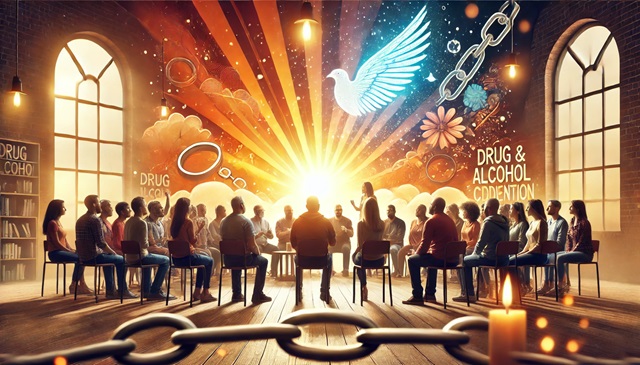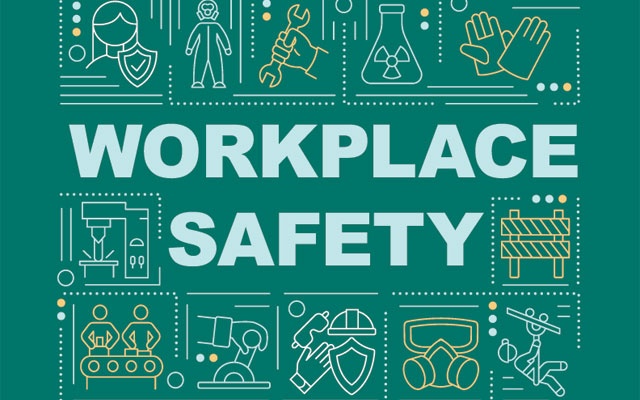The last of the major drug categories is hallucinogens. Aside from causing people to hallucinate or "trip out," many people are unclear as to what occurs when a person takes a hallucinogen. This article will look at the details concerning hallucinogens. Topics will include the types of hallucinogens, how they appear and are used, how to identify users, the side effects, and what to expect for treatment.
What Are Hallucinogens?
As their name would suggest, hallucinogens are substances that cause a person to hallucinate. While this isn't the norm for all types of hallucinogens, altered states of conscious and perception are the primary result these drugs have. Included in this category are natural substances, like plants and fungi, and synthetic substances. There are no viable medical purposes for hallucinogens, making all types Schedule I drugs under the Controlled Substances Act.
In terms of origin, many hallucinogens can be found in nature. Psilocybin, peyote, and marijuana are all plant- and fungi-based hallucinogens that have existed to some degree for centuries. Some have multiple species and variations spread throughout the world, while others are more localized to specific climates. A component rather than a standalone organism, psilocybin is found in hundreds of wild mushroom species in varying levels. This has resulted in instances of accidental ingestion by people and animals that misidentify a hallucinogenic mushroom.
Non-plant or fungi based hallucinogens are synthesized in laboratories, many of which are illegal. The chemistry of these drugs can vary, not just from type to type, but by manufacturer to manufacturer. Their effects can also vary; depending on the chemical components, a manufacturer included for both primary and filler ingredients. New synthesized hallucinogens and synthesized versions of natural hallucinogens are introduced into the illegal drug market every year. Some fail and fall out of usage while others gain popularity and spread.
Usage rates for hallucinogens vary based on how studies and surveys are conducted. Marijuana is considered a hallucinogen, but it is often treated as its own separate category. This occasionally applies for LSD and MDMA or Ecstasy. In SAMHSA's 2014 National Survey on Drug Use and Health, 22.2 million users identified as current marijuana users and 1.2 million as current hallucinogen users. The survey also found that 287,000 and 609,000 had used LSD and ecstasy, respectively, in the last month.
Many hallucinogens are used as "club drugs" and are designed to amplify a user's experience at parties and concerts. This is not always the case, as there are some club and party drugs that people have used outside of their intended setting. Their accessibility and sale, however, are often in such environments.
Due to synthesized hallucinogens, there are quite a few that a person may encounter. Some examples include:
-
Natural Hallucinogens--Peyote or mescaline, Psilocybin or magic mushrooms, Salvia, Cannabis/Marijuana and DMT.
-
Synthetic Hallucinogens--LSD, Ketamine, PCP, MDMA/Ecstasy, and K2/Spice.
The effects of some steroids are considered hallucinogenic in nature, and can be categorized as hallucinogens. Inhalants, which can include a variety of household items that produce chemical fumes or vapors, are also deemed hallucinogens. Common inhalants can include glue, cleaning products, markers, spray paint, and lighter fluid. They are used by placing the item close to the user's nose and sniffing, or sprayed into a container and then inhaled by the user. There is also huffing, where a rag or other piece of fabric is soaked in the substance, placed in the mouth of the user who then inhales the fumes. Tracking the abuse of these items can be difficult, as they are not monitored as abused substances. Employers who suspect hallucinogen or inhalant use in the workplace should keep an eye on any of these products and their usage.
Appearances and Usage
In terms of their visual appearance, hallucinogens have an almost ridiculous amount of variations. Again, this is because of the preferences of manufacturers who want to develop their own version of a drug. Synthetic hallucinogens are often in a pill or tablet form, coming in a multitude of colors with logos or symbols stamped on them. Liquid-based hallucinogens are applied to dissolvable paper--blotters--with similar designs.
Natural hallucinogens are often still in some version of their original form, usually dried or ground up for usage. They, too, may have logos or designs attached to them, but it is usually on their packaging and not on the substance itself. A feature of natural hallucinogens that impacts their usage is that they can be included as an ingredient in foods and drinks. Many people have heard of marijuana being added to baked goods--"magic brownies"--but many psilocybin users will do the same thing. For example, frequent psilocybin users will brew the mushrooms as teas for consumption. This often helps conceal the taste of the substance and control the dosage being taken.
Most hallucinogens, synthetic and natural, are taken orally if their form allows it. Some users have taken pills, crushed them, and then snorted or smoked the resulting powder. Blotters, a common form for the hallucinogen LSD, are placed on the user's tongue and allowed to dissolve. MDMA or Ecstasy has been known to come in liquid and powdered forms, but these are usually mixed with additional substances like other drugs and alcohol rather than taken on their own.
Signs of Usage
Many people have a stereotypical idea of what hallucinogen usage looks like dilated pupils, a glazed over expression, and talking and/or interacting with things that are not there. While some users may have such symptoms, these are not the only ones possible nor are they standard for all hallucinogens. The effect that hallucinogens have on a person are primarily psychological, so it is not abnormal for there to be no obvious physical signs at first glance. Identifying signs of hallucinogen usage may require paying close attention to the actions, rather than the appearance, of the person using them.
Some general signs, which may vary in intensity based on the dosage, setting in which the drug is being taken, and the person's initial mood, may include:
-
Psychological--Distorted perception, both visual and auditory. Time may move differently for the user and the space around them may warp into different shapes and colors. Sensory hallucinations--visual, auditory, olfactory, taste, and/or touch--may occur to some degree. In some cases, the effect the drug has on the brain may trigger sensations of hunger or sexual arousal. Changes in mood may also occur.
-
Physical--Many physical signs of hallucinogen use are the body's response to the psychological signs. The brain controls the body, thus changes in the brain's function affect that control. Primarily, hallucinogen users will exhibit an increased heart rate and blood pressure. Their respiratory rate may also increase in response. Dilated pupils are a possibility as well. Changes in muscle control have been known to occur, as the changes in perception experienced by the brain causes the person's muscles to flex in response to stimuli. The user may physically act on the sensations of hunger and sexual arousal mentioned in the psychological signs.
There are also signs that are specific to certain drugs, which may help identify the substance the person is using.
-
Marijuana--Some signs of marijuana use include lethargy, bloodshot eyes, and a lack of physical coordination. Users may also seem abnormally talkative or confused and unable to focus. They may exhibit some difficulty with memory, and may not accurately remember things while under the influence. If they had smoked the drug, they may have some coughing and lung irritation similar to tobacco smokers.
-
Peyote and Mescaline--Many of the psychological signs of peyote and mescaline use are similar to LSD, PCP, and psilocybin. For some users, a combination of euphoria and anxiety can develop. Physically, they may develop nausea, vomiting, perspiration due to an increased body temperature, muscle weakness, and headaches.
-
Ketamine--Ketamine or Special K's effect only lasts about 30-60 minutes so the signs can be a little harder to notice the more time passes. It often causes the user to experience a lack of control and generates a sense of disconnection from their surroundings. Some users may seem relaxed or blissed out; others may have an out-of-body experience and become convinced that they are dying. They may also randomly stiffen their muscles, have rapid eye movement, salivate, or have watery eyes.
-
MDMA/Ecstasy--Ecstasy affects serotonin, a chemical in the brain. This may cause changes in their sleep patterns, pain response, and mood. Users may seek out stimulation, especially touch and sexual arousal. Instances of depression, paranoia, anxiety, and confusion have been known to develop in users. Additional signs include alertness and an increase in motor activity. The effects of MDMA have been known to continue for several hours, and even resurface in waves in the weeks after use.
-
Psilocybin--For psilocybin users, the lines between reality and fantasy may blur. Large dosages have been known to cause panic attacks and episodes of psychosis; depending on the hallucinations a user has, these may happen in response with smaller dosages as well. Instances of nausea and vomiting are also possible.
-
LSD--Perception of time and depth may be compromised with LSD usage. Users are unable to make judgments, which may cause them to harm themselves or others while under the influence. Physical signs include sweating, tremors or shaking, inability to sleep, increased body temperature, loss of appetite, and dry mouth. Like MDMA/Ecstasy, a single dose of LSD can last for a long time.
The Side Effects
The side effects common to hallucinogens are similar for the different types. the onset of effects and the duration in which they last is dependent on the length of usage, the dosage, and the drug itself. It is not unusual for hallucinogens to be combined with other drugs, hallucinogenic or otherwise, which can also impact the effects the user experiences.
-
Short Term Effects--Many of the short-term effects are continuations of what is listed above. Some users have reported continued sleep problems, sensations of detachment, lack of appetite, and higher blood pressure, heart and respiratory rates as the drug leaves their system. There have also been instances of what is described as a mixing of senses, like seeing sounds, smelling colors, etc. Episodes of paranoia and psychosis have also been known to remain after the drug has left the user's system, such as with MDMA/Ecstasy and LSD.
-
Long Term Effects--Some of the long-term effects are amplified with extended usage of certain hallucinogens. Damage can occur to the brain's mental processes, resulting in speech and memory loss. Drugs that cause a loss of appetite, if used frequently, can cause weight loss. Certain drugs, like ketamine, can affect kidney function and the user may develop ulcers in their bladder. Flashbacks and recurring episodes of psychosis similar to what they person experienced under the influence of hallucinogens can happen well after they have stopped using, even years later. Instances of depression, suicidal thoughts, and attempts at suicide have been found in former hallucinogen users.
Former hallucinogen users have also developed some strange side effects that may be blamed on their drug use. There have also been cases where former users have developed symptoms of serious health conditions. Often these conditions, like strokes and tumors, are not actually there. This has resulted in misdiagnosis and false positives, which can be problematic and expensive if not corrected in a timely manner. Such cases may be a result of the chemical changes made to the brain by specifically by hallucinogenic use, rather than any other drug type.
Treatment and Recovery
Treating hallucinogen addiction is different than treating other drug addictions. Not all hallucinogenic substances are actually addictive or have addictive qualities. With those particular substances, the users are consciously choosing to use them rather than being compelled to by a chemical dependence. PCP is one of the few exceptions, as users have experience traditional drug cravings and withdrawal symptoms after repeated usage. Tolerance does still occur with hallucinogenic drugs, so users may still increase their dosage in order to feel any effects. Continued usage of LSD has been known to affect the user's tolerance to other drugs, including other hallucinogens. In treatment, this may be an issue if the user is prescribed medication as part of their care.
There is also a lack of treatment programs that focus on hallucinogens, primarily due to a lack of research available on these drugs. Much of what is available is in the form of outpatient care, mostly with a focus on behavioral treatment and therapy. Users may need more care and treatment for the effects of hallucinogen use rather than for the drugs themselves. Many of the residual effects of hallucinogen abuse generate ongoing issues for former users and act as a deterrent against relapse during recovery.

































